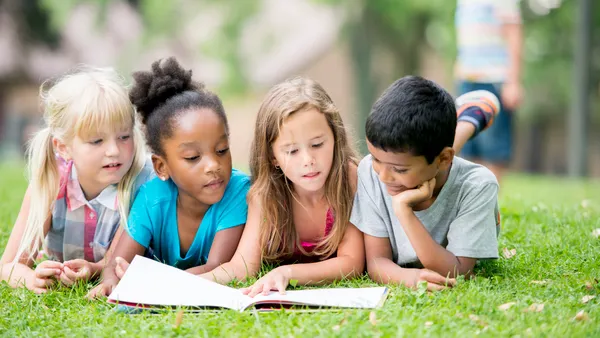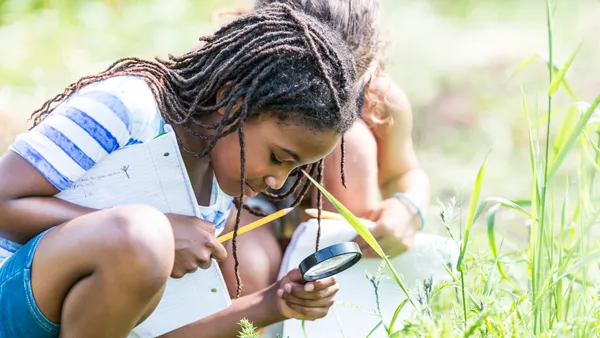Dive Brief:
- Just 20% of students study a foreign language in the U.S. But learning another language doesn’t only help students communicate with people from other cultures, it can also lift proficiency in math and reading, according educator Jack Davern, writes in Education Week.
- Davern, the principal of Elon Elementary School in Elon, N.C., hosts a Spanish-language immersion program at his school, with 11 teachers from other countries, recruited through Participate. Teachers at his school report that students in the immersion program show more sensitivity about other country’s traditions and cultures.
- When students and educators learn another language, and interact with teachers from other parts of the world, they begin to view themselves as part of a bigger, global community, he writes.
Dive Insight:
Despite debates over immigration policy, or perhaps in light of it, it’s important to teach students to see themselves as global citizens. The world’s economy is deeply intertwined, and technology continues to evaporate borders. As a result, today’s students will work and engage with people from many countries. Fluency, and comfort, with multiple cultures, traditions and languages is growing more important for their future success.
Curriculum designers can explore offering immersion programs to expose students to cross-cultural experiences. There are experiences designed just for teachers as well, such as the Fulbright Teachers for Global Classrooms Program, which not only sends teachers abroad to expand their global fluency, but also has them bring back what they’ve learned to students.
Administrators and principals can also encourage teachers to make use of online technologies, like Skype and Google Hangouts, as an immediate, low-cost and easy gateway to other cultures, countries and classroom practices from all over the world. Virtual field trips and author visits can bring experts into classrooms, and one place to start is with Microsoft’s Skype In The Classroom which links educators and speakers together.
Curriculum writers can expand classrooms into global gateways. Doing so not only expands children's academic skills — but their social skills as well.










